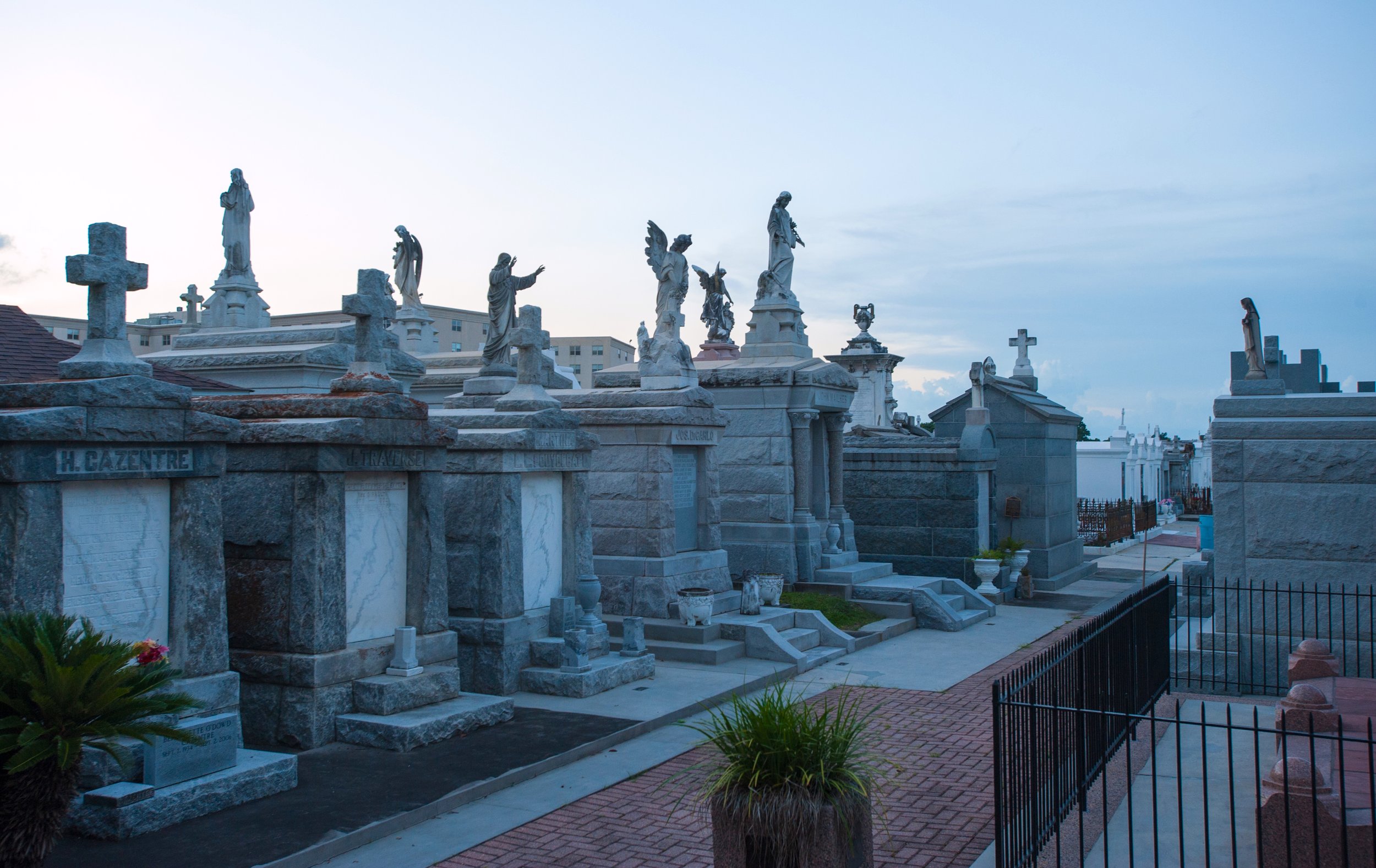Why New Orleans Cemeteries Are Above Ground
Above-ground tombs in St. Louis Cemetery #3 in New Orleans
Driving around the city, it’s almost inevitable that you will drive past a cemetery. And one of the first things you will notice is that our tombs are above ground. But why? The question of why New Orleans tombs are above ground is one of the most commonly asked questions. In a nutshell, there are three answers: practicality, de Pouilly, and New Orleans’ port.
Delachaise-Livaudais tomb in St. Louis #2. Note the inverted torches with flames - they mean the flame of eternal life.
1. Practicality: The first cemetery was the St. Peter Street Cemetery in the French Quarter. It was the city’s primary burial ground from approximately 1724 until 1789, when St. Louis Cemetery #1 replaced it. At the time, all burials were entirely below ground. Unfortunately, because New Orleans is below sea level, grave diggers hit water before the traditional “six feet under.” This meant that after a good rain, grandma could be found floating down the street! The St. Peter Street Cemetery was closed in 1789, but bodies still occasionally turn up. In 1972, a woman found five coffins underneath` what is now the Maison Dupuy Hotel. In 1984, workers building condos at 1022-28 St. Peter Street discovered remains from 32 graves. In 2011, a man building a pool in his French Quarter backyard yard unearthed 15 people. When St. Louis Cemetery #1 was established in 1789, above-ground tombs became standard for sensible reasons. So simply put, it is because much of New Orleans is located below sea level – and we want to keep everyone where their families left them!
The tomb of J.M. Caballero in St. Louis #2 designed by de Pouilly
2. Jacques Nicholas Bussiere de Pouilly: Born in France in 1804, de Pouilly was one of New Orleans’ most celebrated architects and is responsible for some of our cemeteries' most innovative and imaginative funerary monuments. He arrived in New Orleans in 1833 with a notebook of sketches from the celebrated cemetery Père Lachaise in Paris. One can trace the influence of the Paris cemetery to de Pouilly’s work in New Orleans cemeteries. Who said you couldn’t take it with you? Now, the wealthy in New Orleans could showcase their wealth in life AND in death.
3. Outsiders' Influence: In the 1850s, New Orleans' port was the South’s primary point of entry for immigrants and was second in the nation behind New York. Europeans and Easterners arriving in the city brought their own aesthetic and artistic standards with them, and many came from cultures with above-ground traditions. Furthermore, tomb-building was enabled by the ready supply of affordable building materials both from the surrounding forests and the city’s strong rail and shipping links to the rest of the world.
Okay, I know that technically makes it four reasons but three sounds much more succinct!
When you visit our city’s great cemeteries, take a moment to pause and enjoy not only the practicality and functionality of their above-ground tombs but also the effort and traditions that brought them here.
If you would like to learn more, consider taking a tour of one of our beautiful cemeteries, or you can purchase my book: Stories from the St. Louis Cemeteries of New Orleans.
Further Reading:
“New Orleans Architecture: The Cemeteries” by Leonard Huber
“J.N.B. de Pouilly” by Ann Mason
“J.N.B. de Pouilly: Architect of New Orleans Cemeteries by Emily Ford



